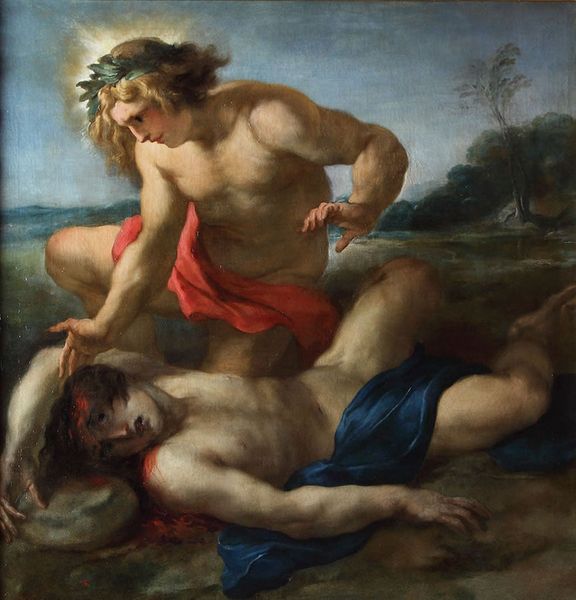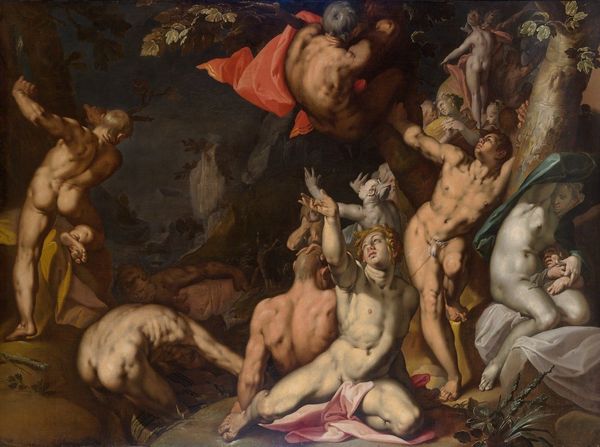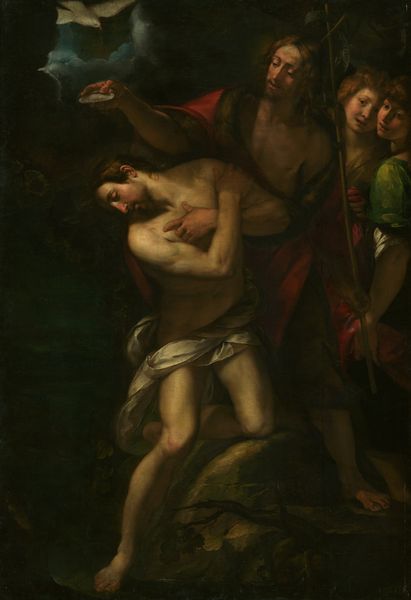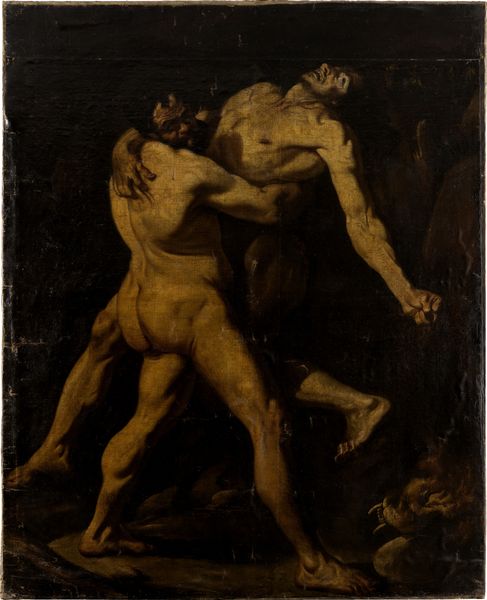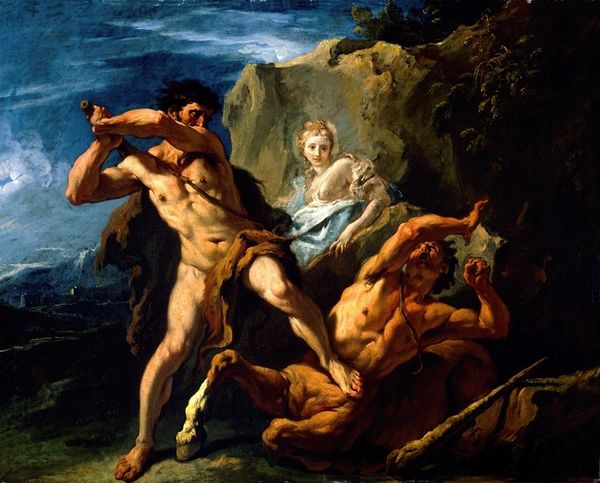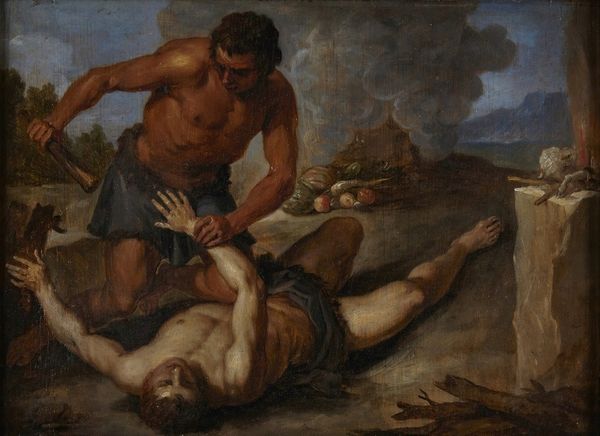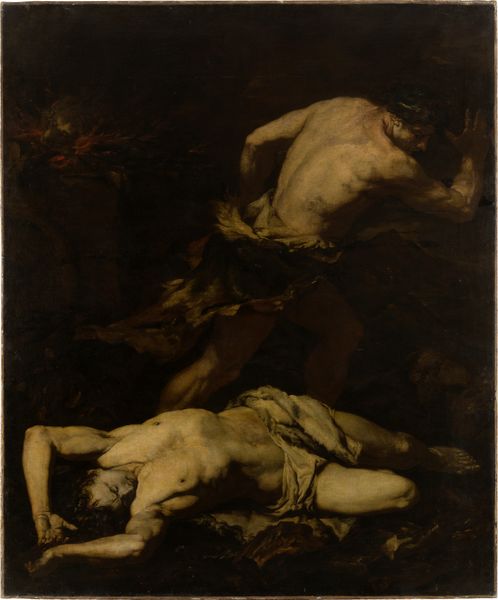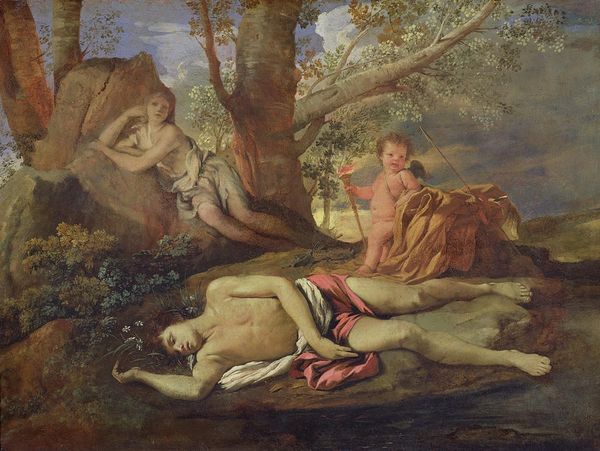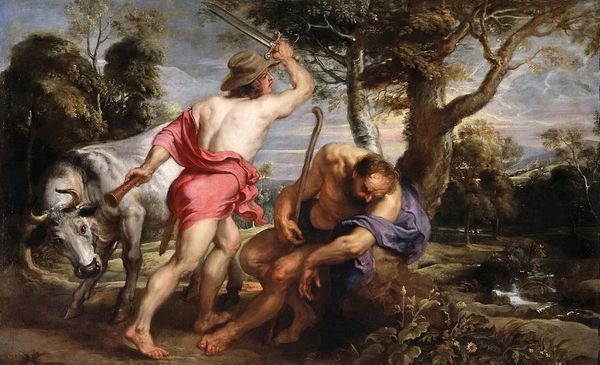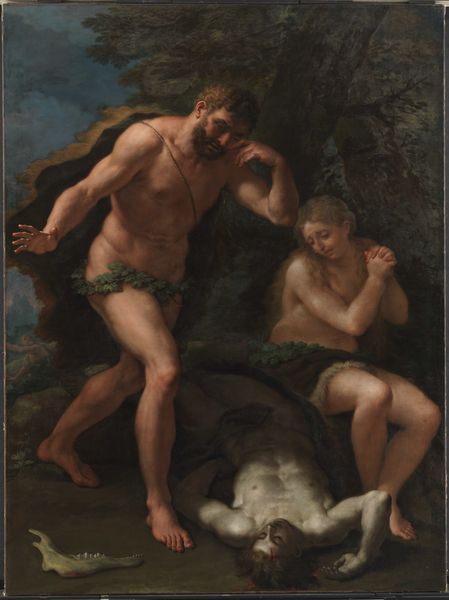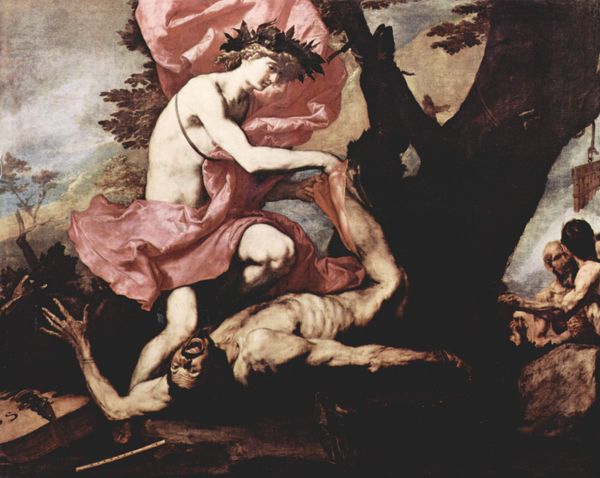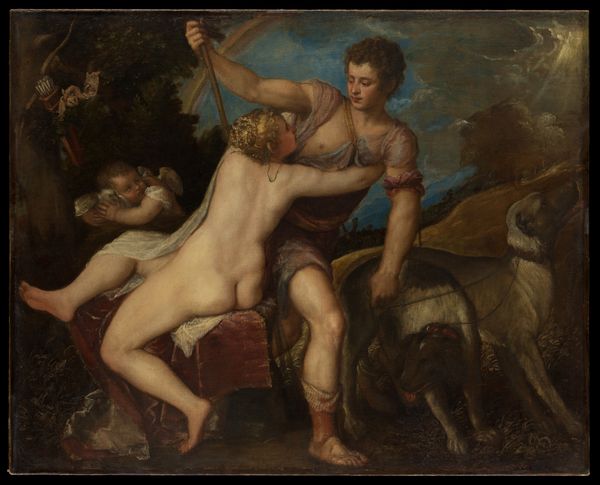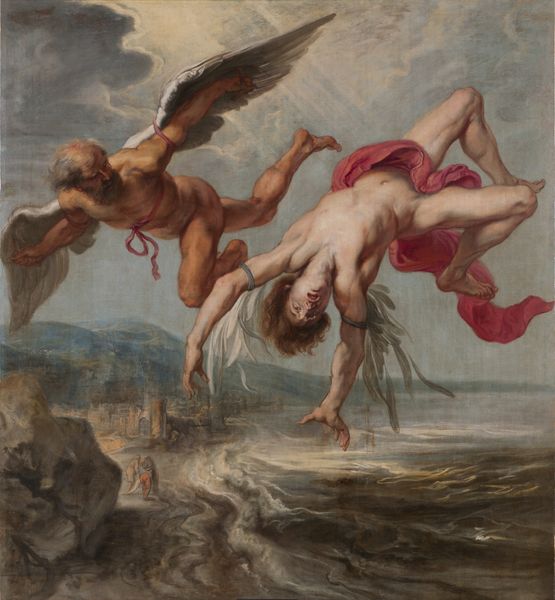
painting, oil-paint, oil-on-canvas
#
allegory
#
baroque
#
painting
#
oil-paint
#
landscape
#
figuration
#
oil painting
#
history-painting
#
oil-on-canvas
#
portrait art
#
realism
Dimensions: 44 1/4 x 59 1/2 in. (112.4 x 151.13 cm) (canvas)53 3/8 x 68 3/4 x 3 in. (135.57 x 174.63 x 7.62 cm) (outer frame)
Copyright: Public Domain
Curator: Looking at this landscape, a profound grief emanates from the canvas. Editor: It does, a primal anguish. Before us is "Adam Discovering the Body of Abel," painted around the early 1640s by Andrea Sacchi. It’s quite a powerful scene rendered in oil on canvas. Curator: Indeed, observe Adam’s posture – bent low, hand pressed to his face. This gesture, heavy with sorrow, is universally recognizable. It mirrors countless depictions of grief across cultures, transcending time. The fallen Abel, laid bare…the serpent in the left-hand corner hints at temptation. Editor: That snake! The entire composition feels politically loaded, if you consider the implications of fratricide – of brothers killing brothers—across history, especially during times of socio-political upheaval like during the Baroque era when it was created. Abel's body appears almost theatrical. Sacchi paints his innocence while subtly indicting a system, or perhaps a deity. Curator: Very astute! Consider, too, the visual symbolism tied to sacrifice. Abel’s role as a sacrificial figure certainly parallels other iconic religious stories. It is difficult not to ponder the deep roots of redemption narratives present here, which in turn invites contemplation of innocence lost…and at what cost. Editor: And Adam’s role as the first man... he becomes Everyman confronted by an atrocity. There is a heavy weight placed on his emotional experience – he bears responsibility not only as a parent but as a patriarch, carrying a cultural inheritance shaped by a first and primordial injustice. His isolation highlights his struggle. Curator: Sacchi's use of color reinforces this solitude; the stark contrast between the pallid body of Abel and the ruddy complexion of Adam. And behind them, in the far background on the right-hand side of the image, we can even discern smoke or fire rising to the heavens. It feels apocalyptic! Editor: The scale adds to this overwhelming sense of dread. Yet even with its darkness, there's a haunting beauty in Sacchi’s technique. Ultimately this artwork urges us to confront complex truths around societal inequalities, power and guilt, and inherited narratives. Curator: Precisely. This painting encourages a vital dialogue on historical symbolism, reminding us that these stories—however ancient— continue to resonate. Editor: And perhaps, to challenge those very narratives. Art should make us think!
Comments
No comments
Be the first to comment and join the conversation on the ultimate creative platform.
